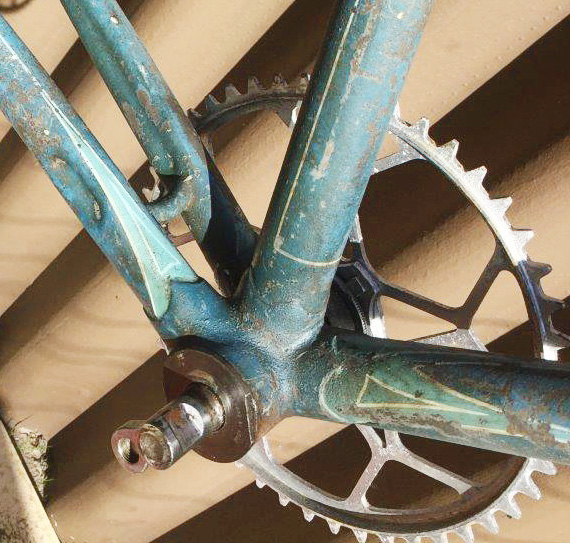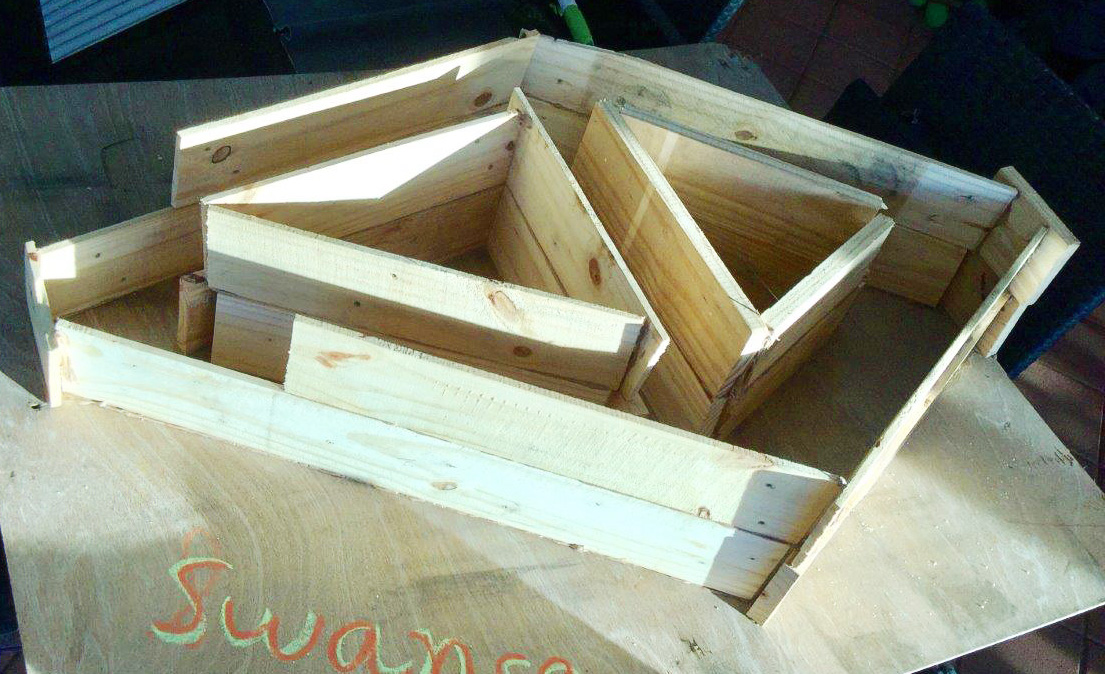Bicycle Restoration The Burra Way - Part Two
Part one introduced the radical notion of doing nothing to newly acquired projects. The key concepts are researching and understanding your bike’s history and provenance. It may be that there is little or nothing known about the bike or there may be a wealth of knowledge that will help inform the next step.
We’re drawn to machines for a variety of reasons. Rarity, nostalgia or attractive pricing. Design, be that aspects of frame design, engineering, embellishment or componentry is an obvious consideration. And of course there’s provenance - design or prior ownership of a bike by a person or organisation of note is an undeniable attraction, be they a winning rider, a celebrity or just your old dad.
The next step on the Burra Charter path to vintage cycling enlightenment is to develop a conservation policy, and from this you can develop a plan of action.
‘Restoration’ is a catch-all term that gets enthusiastically bandied about the vintage and veteran bike scene whenever collectors are gathered together. Contrasting ‘restoration’ with ‘conservation’ is considered the height of subtlety and is only used by the most elite collectors. Understanding and applying the Burra Charter principles obliges us to define these terms more carefully, and to add a few more.
At the heart of the Burra Charter is the idea that items of cultural significance should be conserved. You and I
are now conservators engaging in acts of conservation. The Burra Charter urges the adoption of a ‘do no harm’ attitude;
“Conservation is based on a respect for the existing fabric, use, associations and meanings. It requires a cautious approach of changing as much as necessary but as little as possible.”
Five conservation strategies are defined in the Burra Charter, let's have a look at them. (Once again I’ve substituted the word ‘bike’ for ‘place’ in the original Burra text.)
‘Preservation means maintaining a bike in its existing state and retarding deterioration’
Preservation is appropriate for extremely rare or unusual items, bikes that are unlikely to be ridden.
'Maintenance means the continuous protective care of a bike, and its setting.'
I love riding my bikes, who doesn't? The character of each is mostly defined by its age and original purpose. Does your collection include low value bikes? Roadside pickups with no provenance, transport bikes with unremarkable histories? Riding them incurs wear to everything from tyres and chain to bar tape, and wear requires maintenance.
‘Restoration means returning a bike to a known earlier state by removing accretions or by reassembling existing elements without the introduction of new material. ‘
The word-part or prefix ‘re’ has long been a part of English. Its roots trace back through Old French and Latin to the theorised Proto-Indo-European language first postulated five hundred years ago. 'Re's' meanings ring clear with the bike enthusiast; "back to the original place; again, anew, once more," also with a sense of "undoing".
As mentioned earlier the word restoration is used frequently in the old bike community. 'Restore' is often contrasted with 'conserve' - a binary choice about the future of a particular bike. Conservation is taken to mean that a clean and tidy is all that's required. Restoration signals more significant work that would certainly involve the introduction of new or refurbished parts, perhaps including new paint. The Burra Charter introduces bike collectors to some new words - reconstruction is the first - and, as previously mentioned, it recasts the term 'conservation' more broadly.
‘Reconstruction means returning a bike to a known earlier state and is distinguished from restoration by the introduction of new material.’
Restoration and reconstruction have much in common. Both begin with our favourite prefix 're' and both concern themselves with “known earlier states”. Let's take a moment to tease them apart.
Restoration is limited to removing accretions; cleaning up rust and dust, and, if the bike's in bits, reassembling it. No new material means no new consumables like tyres or bar tape, no new paint and no replacement parts. Reconstruction allows us the introduction of parts and paint to meet the goal of returning the bike to a known earlier state.
The bicycle had barely been invented in 1865 when Lewis Carroll sent his young friend Alice "Down The Rabbit Hole" in Chapter One of "Alice's Adventures in Wonderland". A century and a half later three words - known earlier states - have us tumbling in after her. There's no way around this; establishing a 'known earlier state' is hard. Given free reign the pursuit can confound the mind and damage the soul of the most hardened collector. This is important though so we shall not waver. The obvious resources available to us are photographs, written descriptions, recollections and contemporaneous machines.
Photographs, where available, are good sources of information. Prior to the 1970's most amateur photos were black and white, poorly framed and blurry, nonetheless information can be gleaned from them and pieced together to form a picture of likely components associated with a frame. Professional photos, rider portraits or advertising photos can be more detailed and informative.
The most common written descriptions contributing to 'known earlier states' are marketing materials from bike manufacturers, often brochures and advertisements promoting their products included detailed specifications.
Through the generosity of individuals and clubs like ours there is increasing access to material of this type. Locating an unmolested contemporary bike as a reference for components or paint schemes can be a huge help.
Recollections from a previous owner or someone familiar with the history of a bike can be invaluable if judged to be accurate.
'Adaptation means changing a bike to suit the existing use or a proposed use.'
There will be times when a known earlier state is impossible to establish, and times when it is of no interest. Adaptation is appropriate in these instances. This policy gives the collector the most freedom. The possibilities range from returning a bike to an imagined earlier state, through to tribute and replica bikes and completely repurposed machines.
Your own aims as well as an understanding your project bike’s history will be guiding factors when choosing the most appropriate conservation policy.
I believe that riding a bike is as much a part of its historical expression as its appearance. My preference for functional bikes suggest that Maintenance, Reconstruction and Adaptation are strategies that I should adopt, whereas a collector interested in static display may be best served by Preservation and Restoration.






